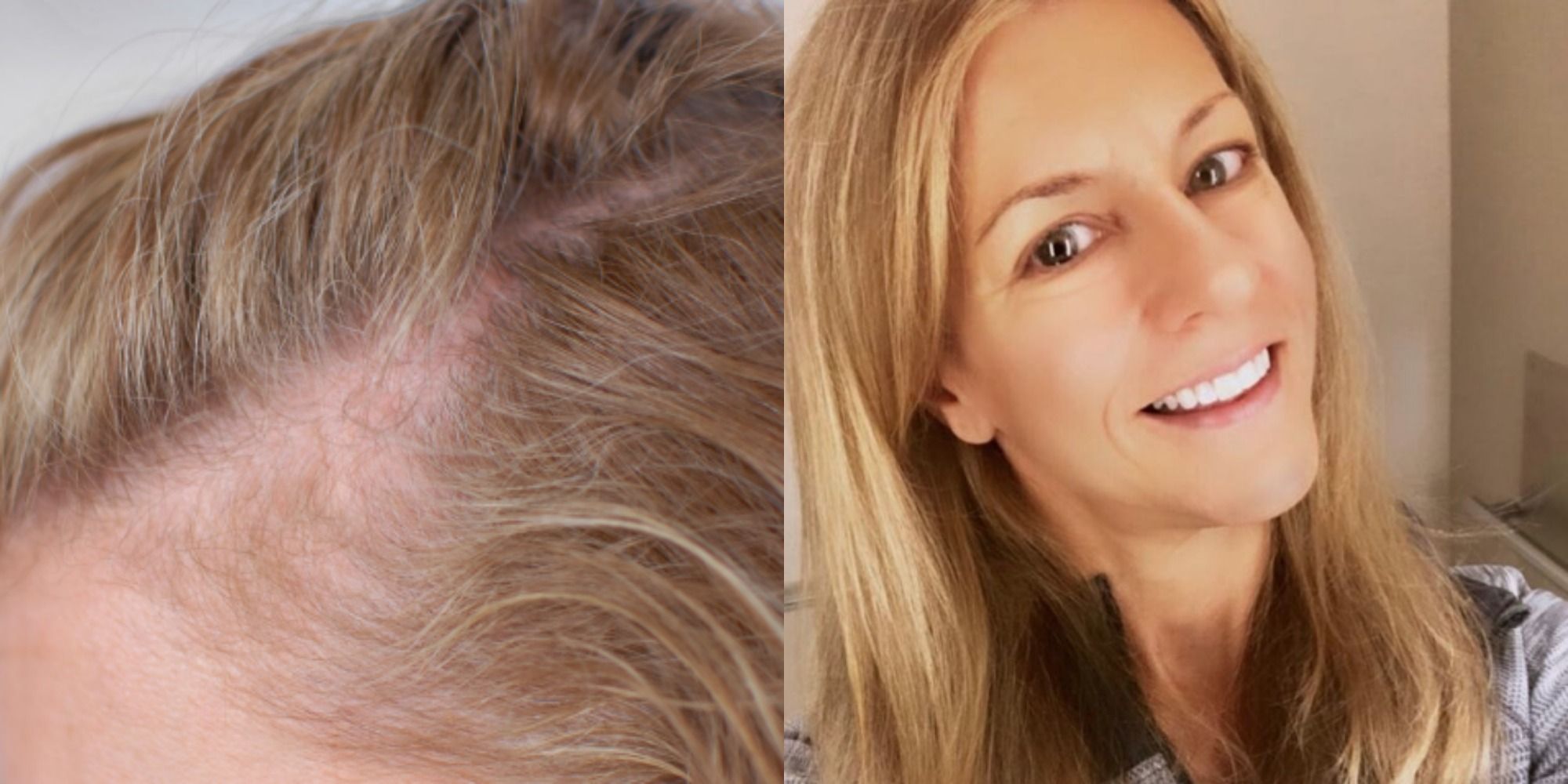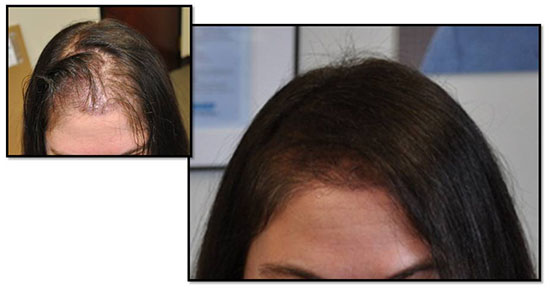The Best Hair Loss Treatments for Women, According to Dermatologists
Table Of Content

CCCA and LPP fall under the umbrella of lymphocytic scarring alopecia. The telltale signs of these conditions are chronic inflammation of the scalp and the scarring of hair follicles, which can result in irreversible hair loss, Agbai notes. People are less likely to develop female pattern baldness before midlife and are more likely to start losing hair once they get into their 40s, 50s, and beyond. Female pattern baldness is usually hereditary — caused by a genetically shorter hair-growing period and a longer period between the shedding and growth phases.
What are the treatment options for hair loss?
Other types of hair loss may involve treating the underlying cause. Topical minoxidil is one of the best hair loss treatments for women, particularly those who have female pattern hair loss. It’s not yet clear how the magic happens, but researchers theorize that minoxidil reverses hair follicle shrinkage and lengthens the growth phase.
What to expect from your doctor
If finasteride works for you, you will need to keep taking it to continue getting results. Before taking this medication, be sure to discuss possible side effects with your dermatologist. While at-home treatments offer convenience, a procedure performed by a board-certified dermatologist tends to be more effective. For this reason, your dermatologist may include one of the following in your treatment plan. A treatment plan for hair loss may include one or more of the following.
From Mayo Clinic to your inbox
If you want to diminish a noticeable scar, know these 10 things before having laser treatment. These dermatologists' tips tell you how to protect your skin. The cost (often thousands of dollars) is prohibitive for most people. With new techniques, many women benefit from hair transplantation surgery. But there are risks, including infection or shock that can cause hair to fall out of the transplanted areas. Your shorter hairs — like eyelashes, arm and leg hair, and eyebrows —have a short anagen phase (about one month).
Hair loss symptoms
Autoimmune diseases essentially trick your immune system into attacking healthy body tissue by mistake. Spironolactone is another blood pressure drug that’s been shown to have anti-androgen effects (which is why it’s commonly prescribed as an off-label treatment for hormonal acne). It prevents androgen receptors from activating, which reduces the influence these hormones can have on your hair follicles. An expert will know how to determine whether your hair will grow back on its own or if you need a personalized treatment plan to turn things around.

Are you losing your hair? A dermatologist breaks down some FAQs.
With an accurate diagnosis, many people who have hair loss can see hair regrowth. If you need treatment for regrowth, the earlier you start, the more likely you are to see regrowth. Within a few months of treatment, you may begin to notice less hair loss. Soon after, you may experience an increase in thickness or regrowth.
Subscribe to Harvard Health Online for immediate access to health news and information from Harvard Medical School.
Currently, it is not clear if androgens (male sex hormones) play a role in FPHL, although androgens have a clear role in male pattern baldness. The majority of women with FPHL have normal levels of androgens in their bloodstream. Due to this uncertain relationship, the term FPHL is preferred to ‘female androgenetic alopecia’. Chemotherapy, certain other drugs and radiation treatments can prompt hair loss, mainly in the growth phase. It is typically temporary (unless the follicles are damaged). Corticosteroids, such as hydrocortisone and prednisone, are commonly prescribed (topically, orally, or through injections) to both alleviate inflammation and curb the autoimmune response.

How will a healthcare provider diagnose hair loss in women?
But consult your doctor before you start to worry; thinning hair is often reversible, Dr. Simpson says. Advanced treatments are available for more serious hair loss. Hormonal imbalances before, during and after menopause can lead to more permanent hair loss, Dr. Simpson says. It’s essential that you not become pregnant while taking spironolactone. To prevent pregnancy, your dermatologist will also prescribe a birth control pill if it’s possible for you to get pregnant. Hair loss can sometimes be a sign of an underlying disease.
Does rosemary oil for hair growth really work? We asked 3 dermatologists to find out - CNN Underscored
Does rosemary oil for hair growth really work? We asked 3 dermatologists to find out.
Posted: Thu, 11 Jan 2024 08:00:00 GMT [source]
What are the symptoms of hair loss?
Other hair loss may be more permanent or may not stop until an underlying condition is treated. Ginseng contains certain phytochemicals that may promote hair growth on your scalp. But further research is needed to recommend specific dosages. “During menopause, hormonal changes, specifically a decrease in oestrogen levels, can affect hair growth cycles. This often leads to thinning of the hair, particularly at the crown and along the parting line. Understanding the underlying cause of your hair loss is absolutely necessary in determining the best approach to halt and reverse any further damage to your hair and scalp.
When the treatment is stopped, hair loss will begin again within 12–24 weeks. According to the American Academy of Dermatology, it’s completely normal to shed anywhere between 50 to 100 strands of hair per day. However, if you’ve noticed more strands falling out of your head than normal, you may be experiencing alopecia, the medical term for hair loss. Common diagnoses include androgenetic alopecia, alopecia areata, telogen effluvium, and lymphocytic scarring alopecia, Agbai tells USA TODAY.
Surgical procedures to treat baldness are not usually covered by insurance. Hair loss can occur if you wear pigtails, braids or cornrows, or use tight hair rollers. Yes, hair tends to regrow when you are no longer exposed to the poison.
Nearly two-thirds of participants experienced some kind of improvement after 1 year. Those who began the trial with more pronounced hair loss saw the most benefit from the medication. Alopecia means “hair loss.” There are many different types of alopecia, in addition to androgenetic alopecia. Androgenetic alopecia can occur at any age after puberty, but it’s most common in postmenopausal women. Advancing age and a family history of the condition are two of the primary risk factors.
While hair loss isn’t itself dangerous, losing your hair is an emotional experience. Unwanted changes to your appearance can influence your self-esteem and social life. Some people find comfort in talking with a mental health professional if their hair loss causes discomfort. Others may find relief in changing their hairstyle or wearing a wig. See a dermatologist as soon as possible when you notice hair loss. The sooner you get treatment, the more effective it’ll be.
Eventually, when all the hairs in the tuft are gone, bald scalp appears between the hairs. Most users see results after consistent use for about two months. The most common cause of alopecia is an inherited condition called male- or female-pattern hair loss.
It typically isn’t covered by insurance, and it can be expensive, Mirmirani says. Dozens of over-the-counter supplements and products purport to reverse hair loss, making it tough for patients to know which ones work and which don’t. Generally speaking, the sooner you start treatment, the more options you have and the better your results, dermatologists say. “As soon as you notice hair loss is happening, you should come in,” says Lauren Eckert Ploch, a dermatologist in Aiken, South Carolina. While alopecia doesn’t typically affect your physical health, the emotional and psychological distress it can cause are very real.
Research from 2015 suggests the regular use of LLLT may help stop hair loss and promote hair regrowth. In short, this type of laser therapy appears safe and effective as a treatment for people who didn’t notice improvement with standard hair loss treatments. “Telogen effluvium is a type of temporary hair loss that occurs when a large number of hair follicles enter the resting phase of the hair growth cycle prematurely. During telogen effluvium, more hair than usual falls out, leading to thinning of the hair, but it's typically reversible once the underlying cause is addressed.
Comments
Post a Comment